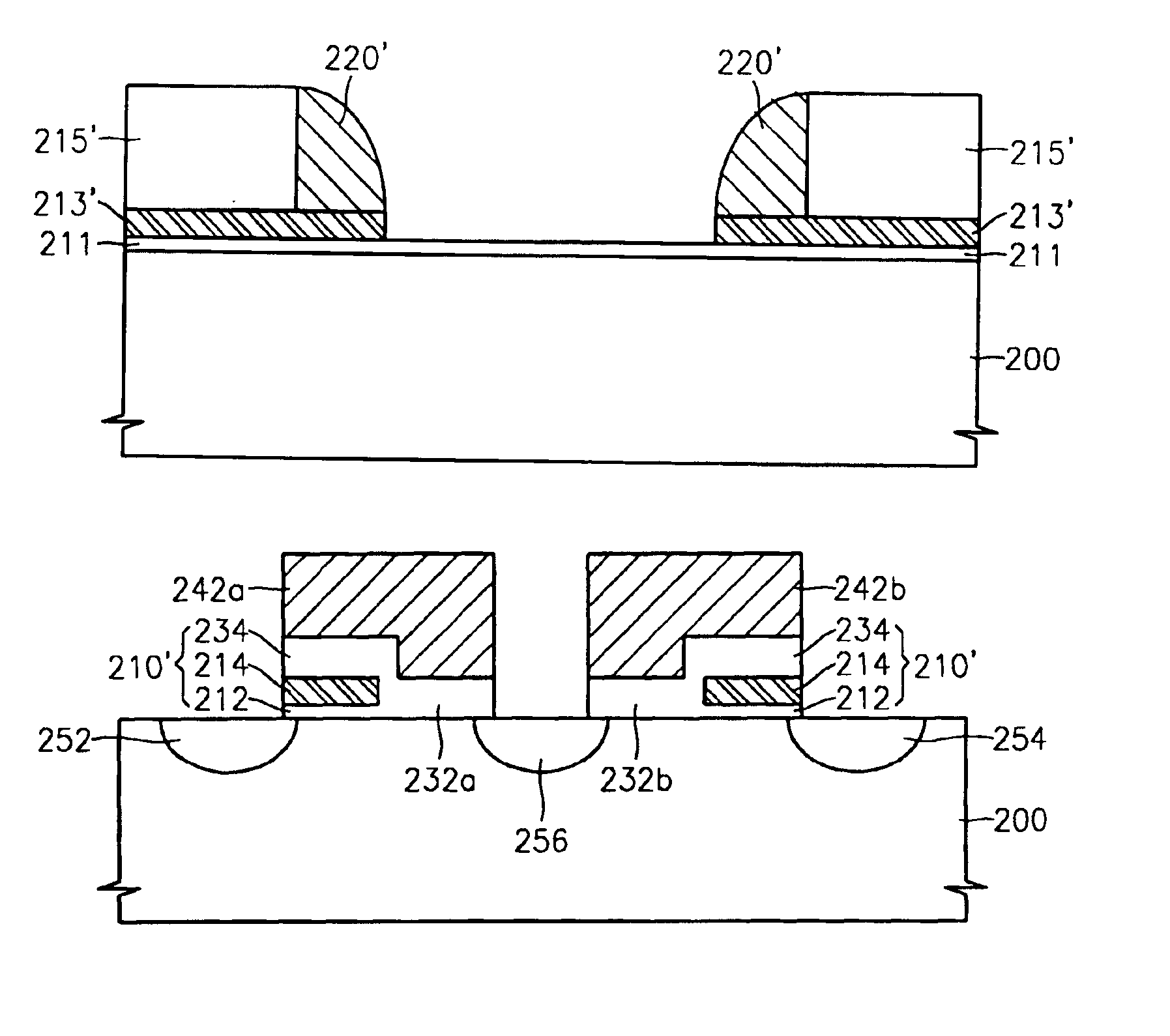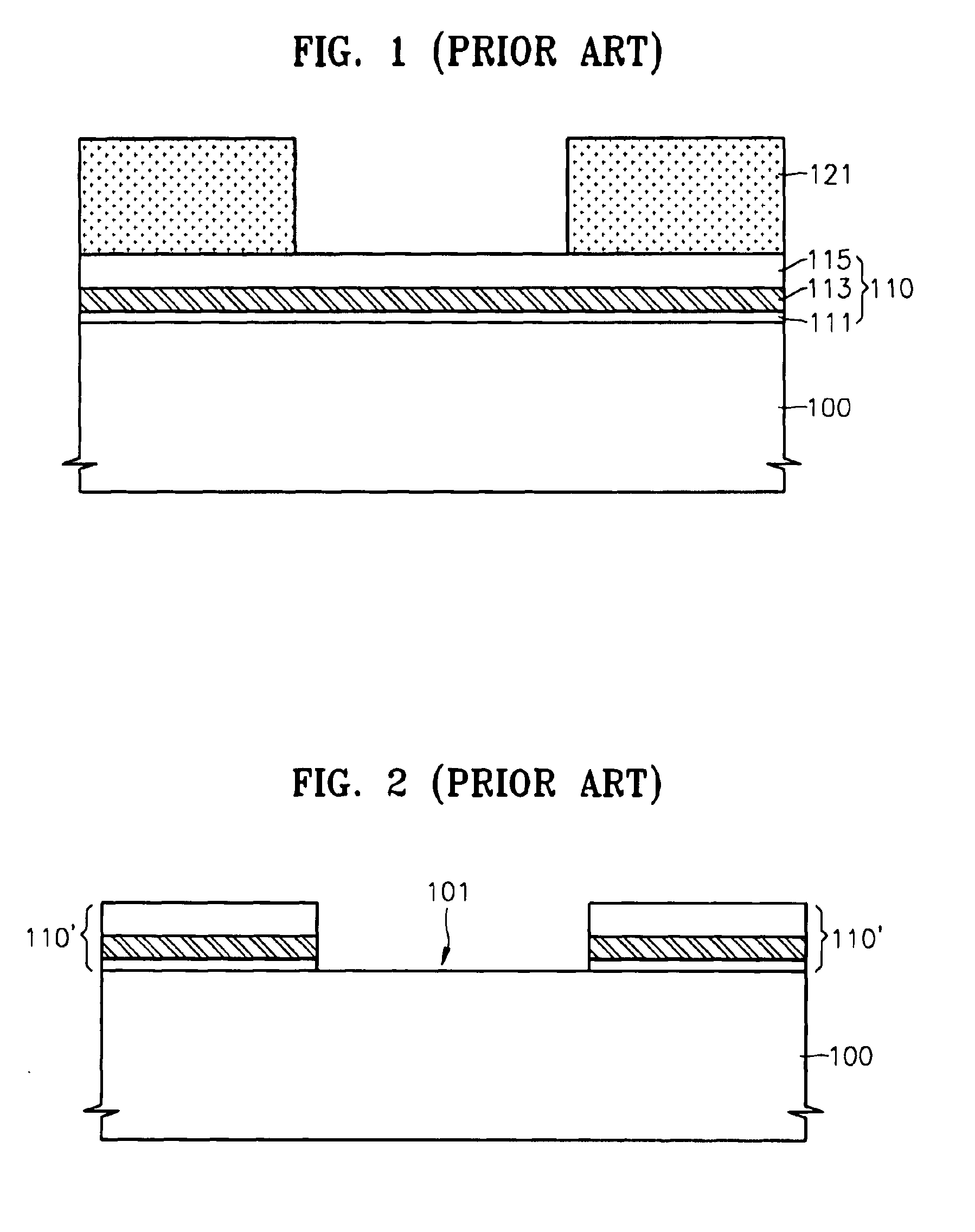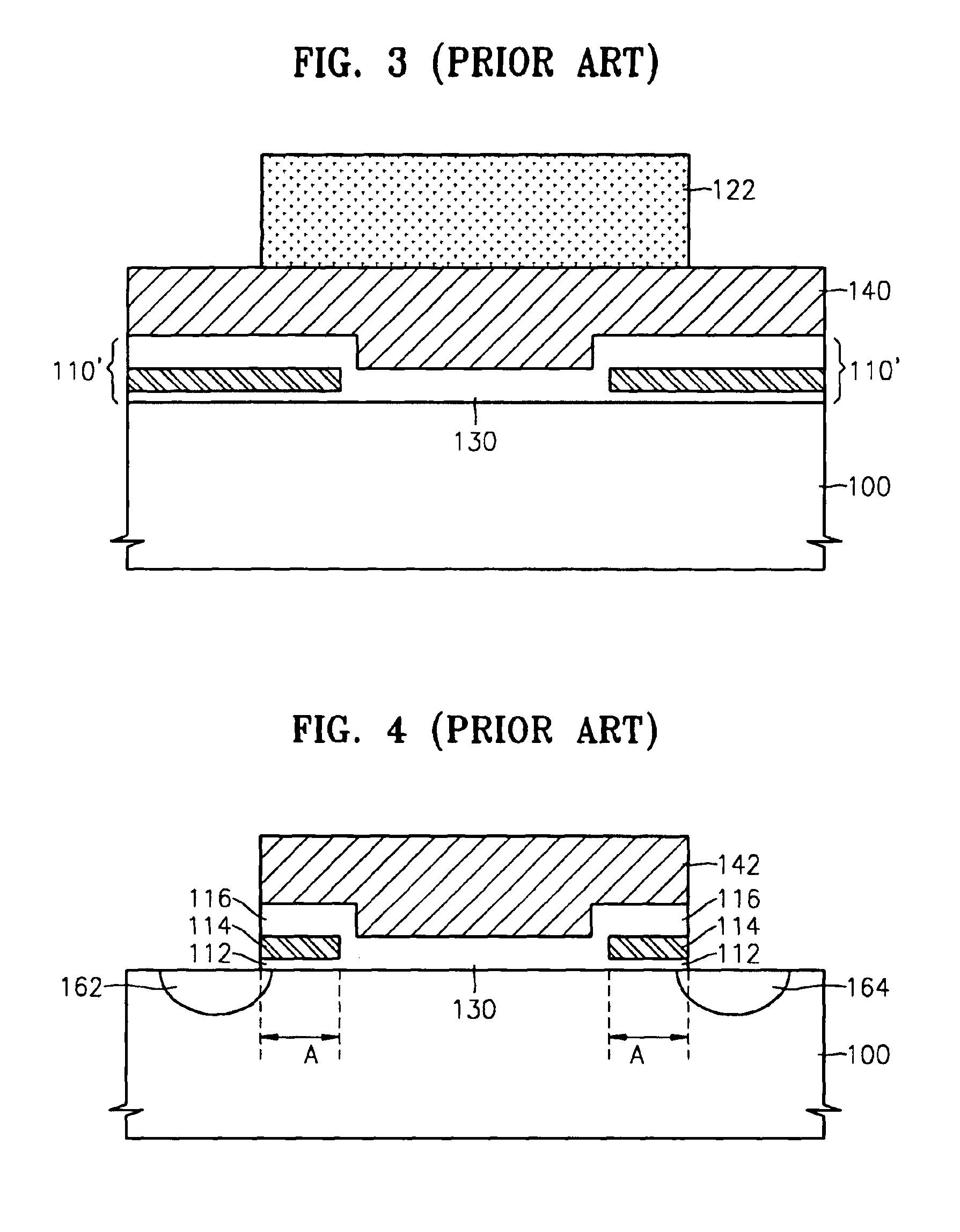Methods of forming a nonvolatile memory device having a local SONOS structure that use spacers to adjust the overlap between a gate electrode and a charge trapping layer
a nonvolatile memory and local sonos technology, applied in the direction of semiconductor devices, electrical devices, transistors, etc., can solve the problems of degrading the reliability of the memory device, increasing the susceptibility to photolithographic processing misalignment,
- Summary
- Abstract
- Description
- Claims
- Application Information
AI Technical Summary
Problems solved by technology
Method used
Image
Examples
Embodiment Construction
[0019]While the invention is susceptible to various modifications and alternative forms, specific embodiments thereof are shown by way of example in the drawings and will herein be described in detail. It should be understood, however, that there is no intent to limit the invention to the particular forms disclosed, but on the contrary, the invention is to cover all modifications, equivalents, and alternatives falling within the spirit and scope of the invention as defined by the claims. Like numbers refer to like elements throughout the description of the figures. In the figures, the dimensions of layers and regions are exaggerated for clarity. It will also be understood that when an element, such as a layer, region, or substrate, is referred to as being “on” another element, it can be directly on the other element or intervening elements may be present. In contrast, when an element, such as a layer, region, or substrate, is referred to as being “directly on” another element, there...
PUM
 Login to View More
Login to View More Abstract
Description
Claims
Application Information
 Login to View More
Login to View More - R&D
- Intellectual Property
- Life Sciences
- Materials
- Tech Scout
- Unparalleled Data Quality
- Higher Quality Content
- 60% Fewer Hallucinations
Browse by: Latest US Patents, China's latest patents, Technical Efficacy Thesaurus, Application Domain, Technology Topic, Popular Technical Reports.
© 2025 PatSnap. All rights reserved.Legal|Privacy policy|Modern Slavery Act Transparency Statement|Sitemap|About US| Contact US: help@patsnap.com



